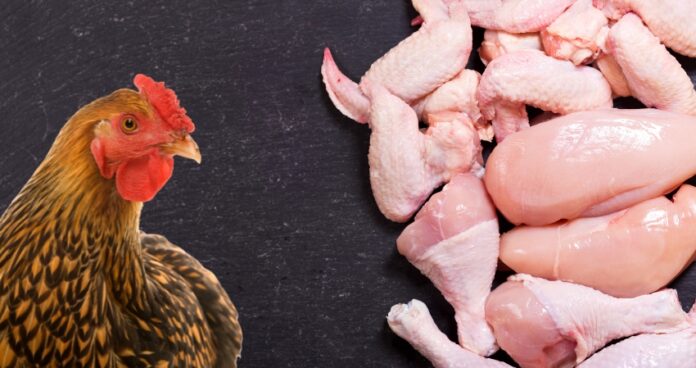The retail price of chicken has surged by almost 35% compared to last year, surpassing the overall inflation rate for the same period. Poultry industry experts predict that these rising prices are expected to persist in the coming months without immediate relief.
“You haven’t seen inflation yet. Its (chicken) price is going to go through the roof in 2024,” said Khalil Sattar, owner of K&N’s, one of the largest poultry production companies in the country with operations in feed milling, breeding, processing, and retail.
A report by Dawn attributes the rising cost of chicken to a decline in production. A key factor behind this reduced production, as explained by Sattar, is the government’s decision to ban the import of genetically modified (GM) soybeans in October 2022, a vital component of poultry feed.
Lower import of grandparent stock
In Pakistan, only a few companies import grandparent stock (GPs), which are birds responsible for producing the parent stock that breeds broilers for mass consumption. Bird production is determined by the number of grandparent stock imported each year. On average, 725 GPs are needed to produce a parent stock of 25,000 birds, eventually yielding 3 million broilers, each weighing an average of 2.02 kg.
According to data from the Punjab Poultry Research Institute, Pakistan’s poultry industry sources grandparent chicks from countries such as Holland, Germany, and the USA.
Sattar points out that annual import of grandparent stock have declined sharply, plummeting from 267,000 birds to just 65,000 this year. Consequently, the quantity of broilers available for consumption in Pakistan is projected to decline by nearly 76 percent this year, dropping from approximately 1.1 billion to just 269 million compared to the previous year.
Ban on GM soybean
Poultry feed represents 75% of the input costs in the poultry industry. Soybean, a protein-rich commodity primarily sourced from the United States, Brazil, and Argentina, constitutes 30% of poultry feed. Soybean meal is the primary feed component for poultry, while its oil is used for human consumption.
In the previous year, Pakistan imported a total of 1.9 million tonnes of soybean, with the United States accounting for 32% of this share, as reported by the US Soybean Export Council (USSEC). The ban on genetically modified soybean imports has led to a significant drop in production within the poultry industry.

























Thats sad for the normal public
not good for poor people